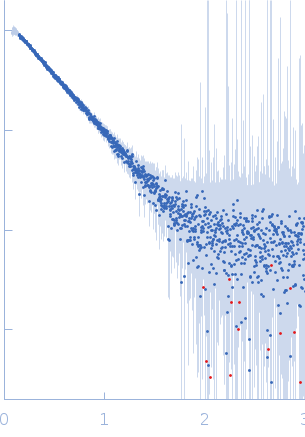|
Synchrotron SAXS data from solutions of exon1 of the pathogenic form of Huntingtin (H46) with GFP fused at the C-terminus in 20mM BisTris-HCl, 150mM NaCl, pH 6.5 were collected on the EMBL P12 beam line at PETRA III (DESY, Hamburg, Germany) using a Pilatus 6M detector at a sample-detector distance of 3 m and at a wavelength of λ = 1.2398 nm (I(s) vs s, where s = 4πsinθ/λ, and 2θ is the scattering angle). In-line size-exclusion chromatography (SEC) SAS was employed. The SEC parameters were as follows: A 50.00 μl sample at 8 mg/ml was injected at a 0.50 ml/min flow rate onto a GE Superdex 200 Increase 10/300 column at 10°C. 1680 successive 0.245 second frames were collected. The data were normalized to the intensity of the transmitted beam and radially averaged; the scattering of the solvent-blank was subtracted.
Https://proteinensemble.org/entries/PED00224
|
|
 s, nm-1
s, nm-1
![Static model image Huntingtin OTHER [STATIC IMAGE] model](/media//pdb_file/SASDQS8_fit1_model1.png)